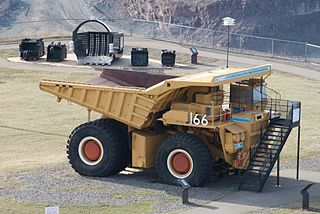Does the Earth’s Crust Contain Enough Stuff to Enable Renewable Energy Dominance?
I’m writing this post from my annual visit to the University of California at Santa Barbara’s Energy Efficiency Summit. As I mentioned, the focus this year is on materials science, and this raises some interesting questions; for instance, if renewable energy is eventually to dominate the world of power generation, does the Earth’s crust contain enough stuff to make this possible?
This is a question that has multiple facets and complexities, the most obvious of which is simply the abundance of materials. If, for instance, we’re going to grow the solar PV industry at a rate sufficient to dominate the world, it appears that we’re going to need 70 times more gallium than actually exists. How will this change as the industry advances? There are no good answers.
Here’s another brain-teaser: metals are “linked.” The “I” in the solar PV technology “CIGS” is indium. But there are no indium mines; the world’s indium comes as a by-product from mining zinc, and we mine zinc largely for its role in producing steel for the building industry. So what happens when the building industry experiences its peaks and valleys?
Similarly, tellurium comes from the mining of copper. Cadmium, like arsenic, is toxic. We’re all enamored of cadmium telluride as a non-silicon PV substrate, since it’s apparently very easy to work with — a “manufacturer’s dream” I’m told. But what happens if we wind up with a surplus of cadmium? We need to sequester it – a cost we’d rather not bear.
Then there’s the discussion of “critical materials,” like the rare earth elements. Fortunately, they’re not at all rare, though most of the highest grade ores are in China, and this provides a number of challenges, economically, politically – and logistically: it’s never a good idea to have only one source of anything that is strategically important.
Neodymium, prized for its use as a permanent magnet, has been used historically in small amounts, for ear buds, disc drives, etc. But now we want to use it in large things: electric vehicle motors in literally millions of cars and trucks, and generators in huge wind turbines. In the later case, instead of using a few grams per device, we’re talking about hundreds of pounds. Are there alternatives that would lower the amount of neodymium needed in wind turbines? Sure, gearboxes. But, as usual, there is no free lunch: gearboxes are expensive, and they break. What happens when a farmer has agreed to have a wind developer use his wheat field and a gearbox fails in the middle of the growing season? The turbine sits there inert until after the harvest, the downtime from which is incredibly expensive.
Recycling provides another challenge. Recyclers love old products. Why? They used large amounts of a small number of ingredients that can be easily and profitably separated. Not today. Modern cell phones can use extremely small quantities of up to 60 different elements! There are minute samples of half of our planet’s elements in a product that’s selling at the rate of hundreds of millions per year. That doesn’t bode well for the prospect of rounding all that stuff up and reusing it. Even if that weren’t the case, the public consciousness with respect to recycling our civilization’s critical materials is just about zero.
Just when it looked as though this post would end “on a bummer,” here’s a question I asked of the “materials scarcity” panel from which the issues above were gleaned:
Isn’t there something to be said for the “Black Swan” effect, i.e., that we grossly underestimate the effect of unforeseeable events in our lives? For instance, people used to ask me to predict the growth curve of PCs and, later, cell phones. Trust me, in 2005, neither I nor anyone else predicted that there would be five billion cell phones in use a few years later. My question is this: Isn’t it a bit strange to make predictions about the materials that will be required for PV in 50 years? Isn’t it almost unfathomable that PV in 2063, if there is such a thing, will have the slightest resemblance to what it is today?
The panel wasn’t as impressed with my question as I was myself. “Yes, there are unknowns,” they replied, “but materials shortages present a real problem to the industry in the long term.”
Oh well. I still think I have a point here. Comments?


You’re being way too pessimistic… critical materials always seem less critical than we thought in hindsight.
Indium and Tellurium may be “critical” materials for CIGS and CdTe, but not in traditional silicon cells. If there is some constraint on those, we can always switch to CSP, which has no significant materials constraints.
Likewise, Neodymium and dysprosium are very useful in electric motors and rotors, but these can also be made just using copper (http://www.economist.com/news/science-and-technology/21566613-electric-motor-does-not-need-expensive-rare-earth-magnets-reluctant-heroes)
I’m not usually a techno-optimist when it comes to solving the problems we’re causing today with the climate, but these resource scarcity worries really are tomorrow’s problems. Scarcity leads to high price, and high price rewards innovation. The reason that does not work so well will reducing carbon emissions is that we don’t pay for the damage we’re doing. When using scarce resources, we do pay, and so resource scarcity problems will vanish with a wave of the invisible hand.
I agree 100% that innovation is extremely likely to make these current concerns about materials evaporate. Thanks, Tom.
Sorry… I did not read the post carefully enough. It was the panel that was too pessimistic, not you.